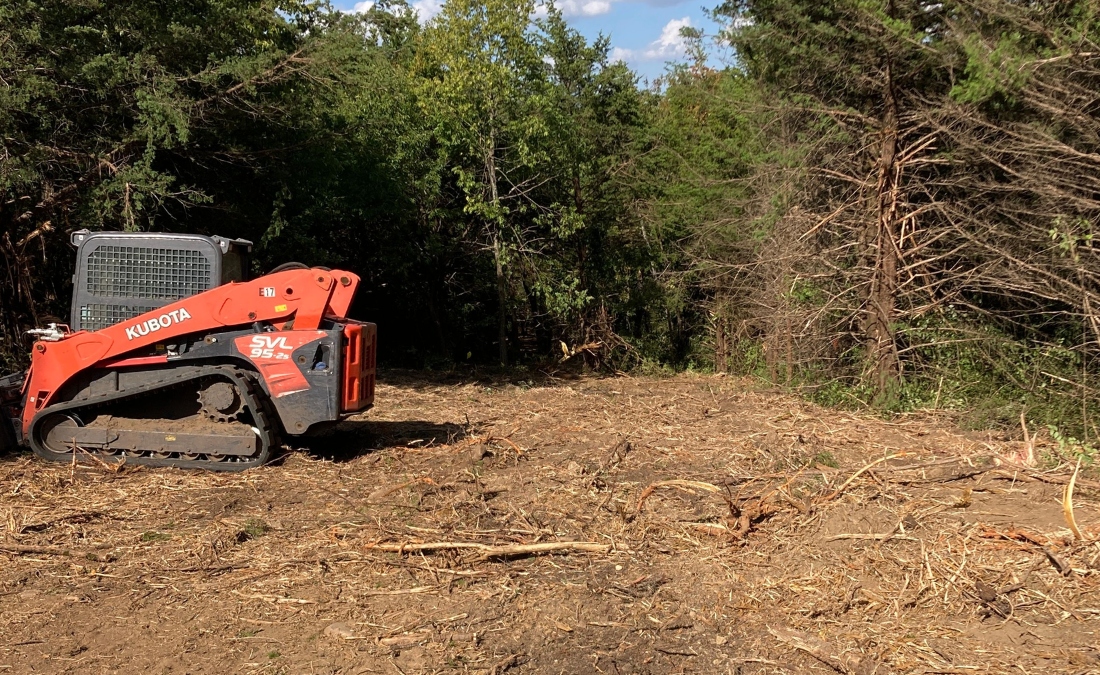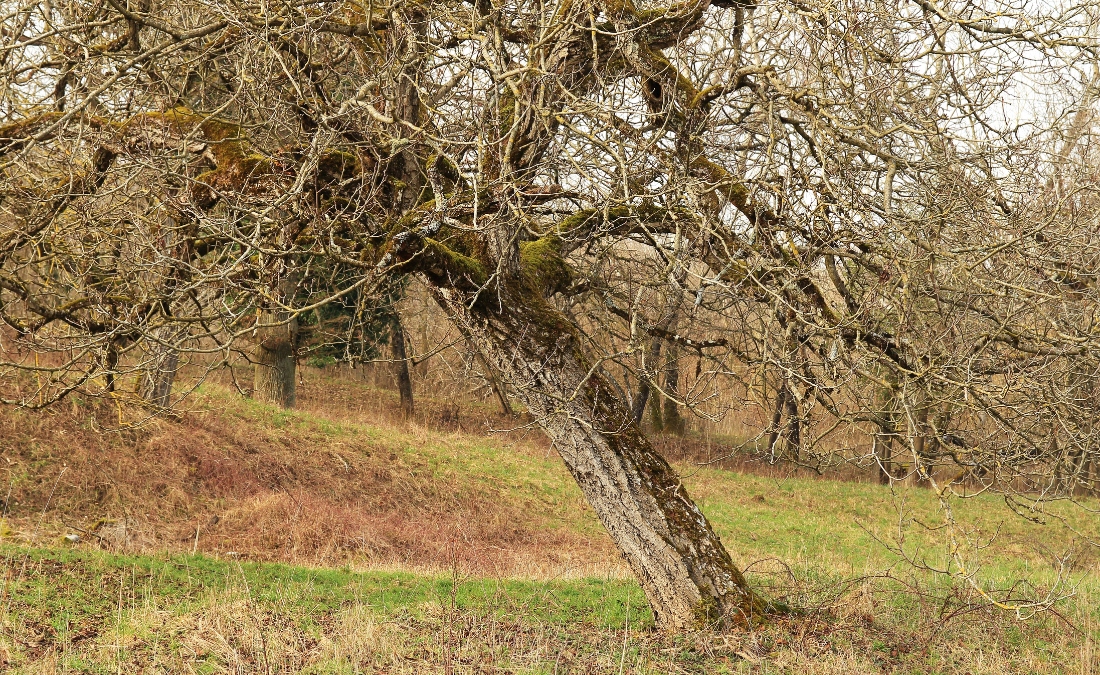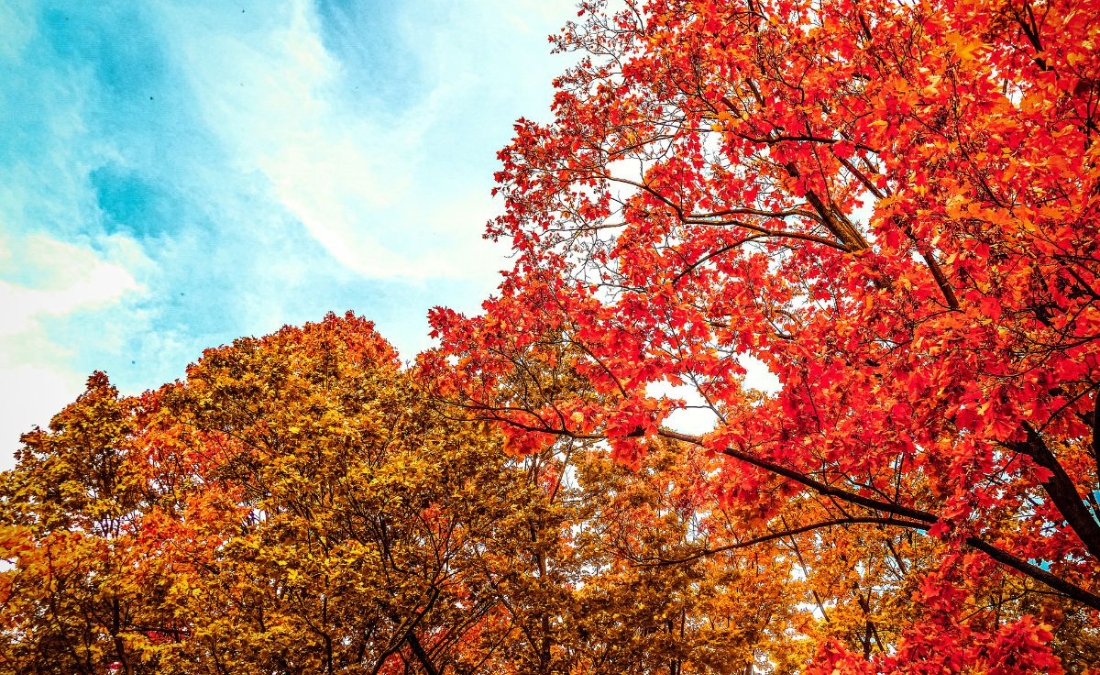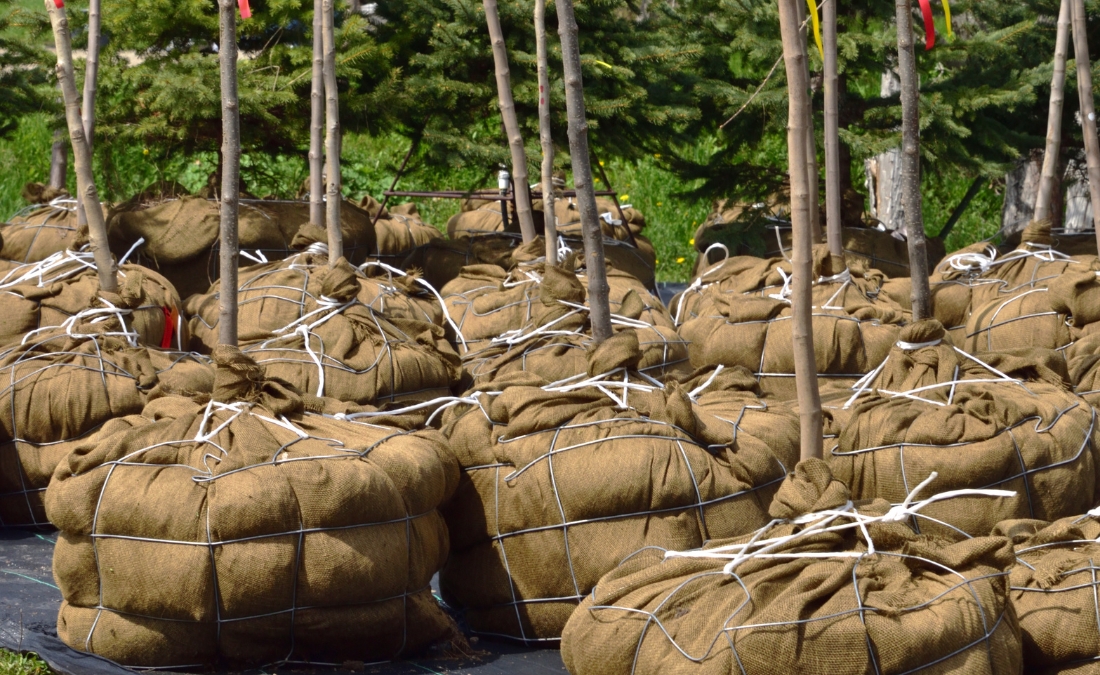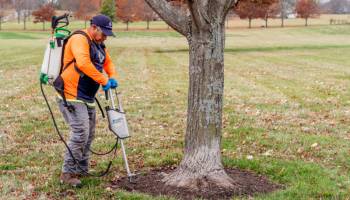7 Signs of Hazardous Trees Tulsa Homeowners Should Know
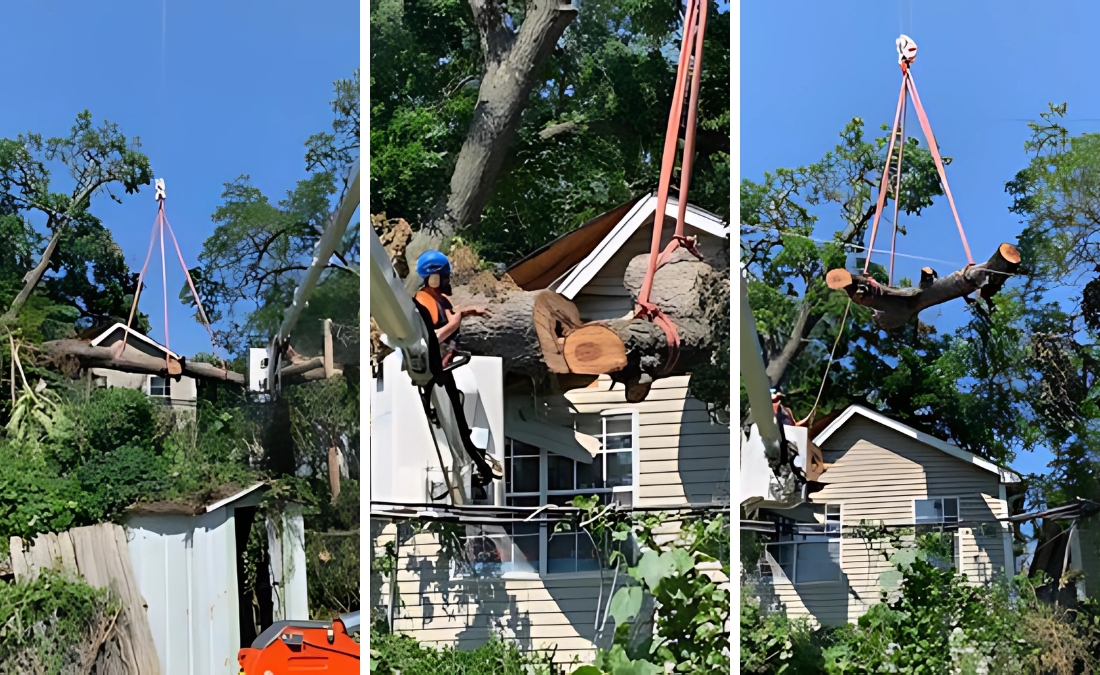
Could a tree on your property be a hidden danger? Learn from Arbor Masters how to spot hazardous trees early & protect your Tulsa, OK, home from costly damage.
Imagine being jolted awake in the dead of night as a massive tree crashes through your home, missing you by mere inches. This harrowing experience became a reality for a local Tulsa woman, who narrowly escaped injury when a tree fell into her house during a storm.
This is one of many stories that highlight why spotting hazardous trees early is so important. By learning to recognize the warning signs, you can protect your home and loved ones from potential disasters.
Key Takeaways
- We only consider a tree hazardous if it poses both a significant risk of failure AND has a potential target (like a house or people) that could be damaged or injured if it falls.
- Common warning signs of hazardous trees include significant leaning (more than 10 degrees), dead branches, multiple trunks with weak attachments, root damage, and dead patches in the canopy.
- Tulsa’s clay soil and severe weather patterns create unique challenges for tree stability, making regular inspections extremely important.
- Tulsa has prohibited planting several trees prone to becoming hazards, like silver maples and white ash trees.
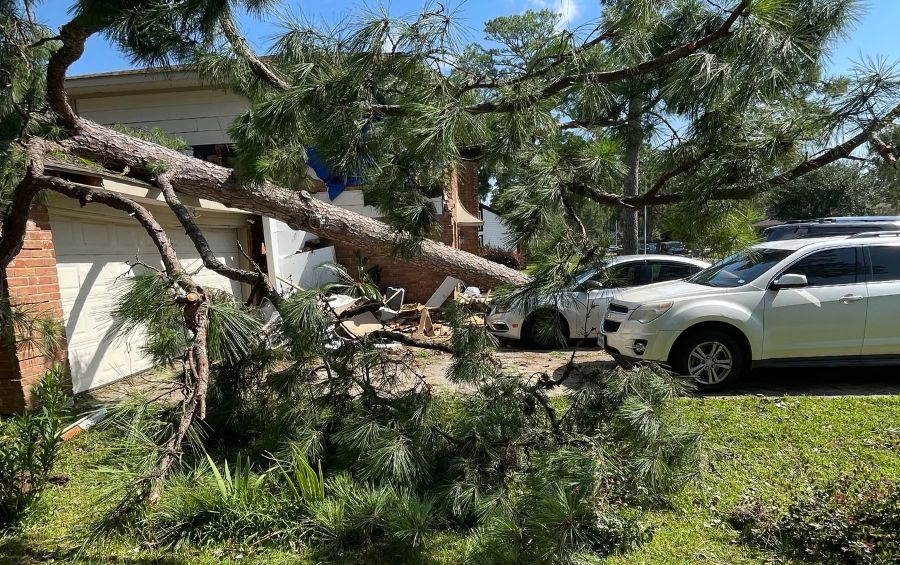
What Is a Hazardous Tree?
Generally speaking, there are two criteria a tree must meet for an arborist to consider it hazardous:
- Risk: While even healthy trees can fall during extreme weather, hazardous trees are significantly more likely to uproot or drop heavy branches. These risks increase when trees are weakened by disease, decay, or structural issues, posing a serious threat to nearby property and people.
- Target: Arborists throughout Tulsa have a saying: No target, no hazard. If a tree is not in imminent danger of damaging a structure or injuring someone, it can’t be a hazard. Simply put, an unhealthy tree in an empty field isn’t hazardous, but that same tree beside your house is.
7 Signs of a Potentially Hazardous Tree in Tulsa
With a keen eye, you can spot a hazardous tree before it’s too late. Trees exhibiting these signs are at higher risk of causing damage, and we recommend having a professional examine them when you notice these signs. Some common symptoms of a hazardous tree include:
1. Leaning Trunk
Ideally, your tree’s main trunk should be perpendicular to the ground. This isn’t always the case, and the trunk may begin to lean. A few degrees from vertical es from vertical isn’t something you necessarily need to worry about, but anything over 10 degrees from vertical is cause for concern.
Trees may begin to lean due to damaged roots or problems with the soil. This problem is even worse for the trees in our area, as the Tulsa’s clay soil compacts easier, making it difficult for trees to expand their roots.
These conditions combined with Tulsa’s frequent storms create a dangerous combination for tree instability. Leaning trees are especially at risk during severe weather, as their compromised balance and shallow root systems make them far more likely to topple or uproot in high winds.
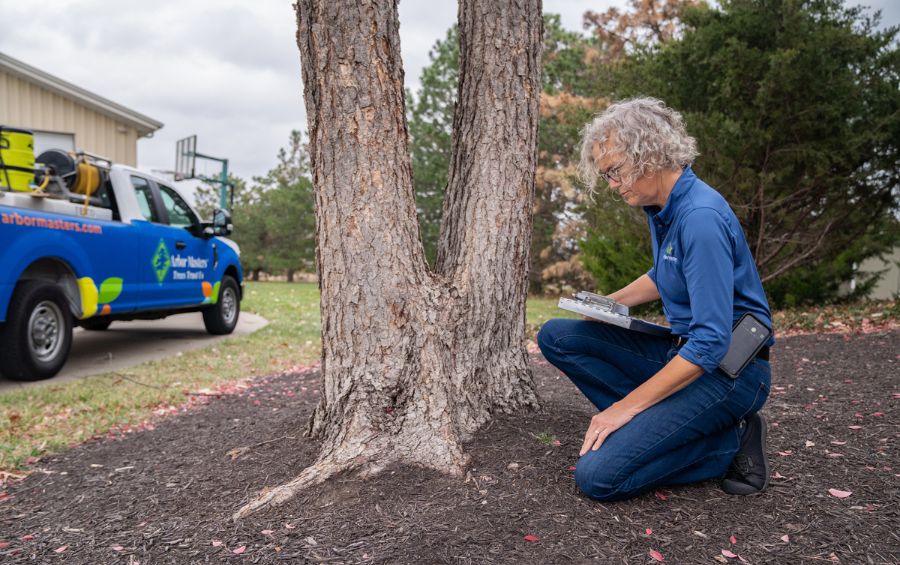
2. Multiple Trunks
Trees should only have one primary trunk from which all other limbs branch off. When a tree develops multiple trunks (known as codominant stems), it makes the point where the two trunks meet weak and prone to breaking.
Your tree is at increased risk of having this union split during a storm. Aside from removing the tree outright, an arborist may be able to prevent any damage by installing cables and braces.
3. Large, Dead Branches
Dead branches may not directly indicate that a tree is at risk of uprooting, but they still pose a significant hazard. These branches are much more likely to break and fall during heavy rain, snow, or high winds, creating potential dangers for people, property, and other parts of the tree.
To spot dead branches, check for sections of the tree that lack leaves during the growing season. In winter, look for peeling bark, brittle wood, or branches with weak connections to the trunk. Dead branches that are already broken and lodged in the canopy can be especially dangerous, as they can fall without warning, even on calm days.
For safety and proper care, it’s best to have a professional arborist inspect and remove dead or broken branches. This ensures the work is done safely and reduces the risk of injury or damage.
4. Root Damage or Exposure
Tree roots play two important roles: absorbing nutrients and water to keep the tree healthy and anchoring it securely to the ground. When roots are exposed, they lose their ability to properly stabilize the tree, making it more likely to topple during strong winds or storms.
Exposed roots are also highly susceptible to damage from insects, lawn equipment, and foot traffic. Damaged or severed roots not only compromise the tree’s stability but also weaken its overall health, making it more prone to disease and decay.
5. Cracks in the Bark
Bark works like armor for a tree, protecting it from pests, disease, and damage. Small cracks are usually no big deal, but if you see deep cracks that expose the wood underneath, it’s time to pay attention. These splits may indicate structural weakness or internal decay, making the tree more vulnerable to breaking during storms.
6. Dead Patches in the Canopy
Dead patches in the canopy can point to several problems with your trees, including:
- Insect infestation
- Disease infection
- Heat stress
- Drought stress
Regardless of why your tree has dead patches, it is a cause for concern and could mean it has become a hazard. Determining why your tree has dead patches is often difficult for most people to diagnose. Instead, speak with an arborist and have them identify the problems and recommend what’s next.
7. Dead Trees
Dead trees do not have the same structural integrity as live trees, and they cannot stand up to the elements. Though some Tulsa homeowners with larger yards keep their dead trees standing to provide a home for birds or mammals, it can be risky if it is near your house. Have an arborist remove a dead tree immediately to protect your property from accidents.
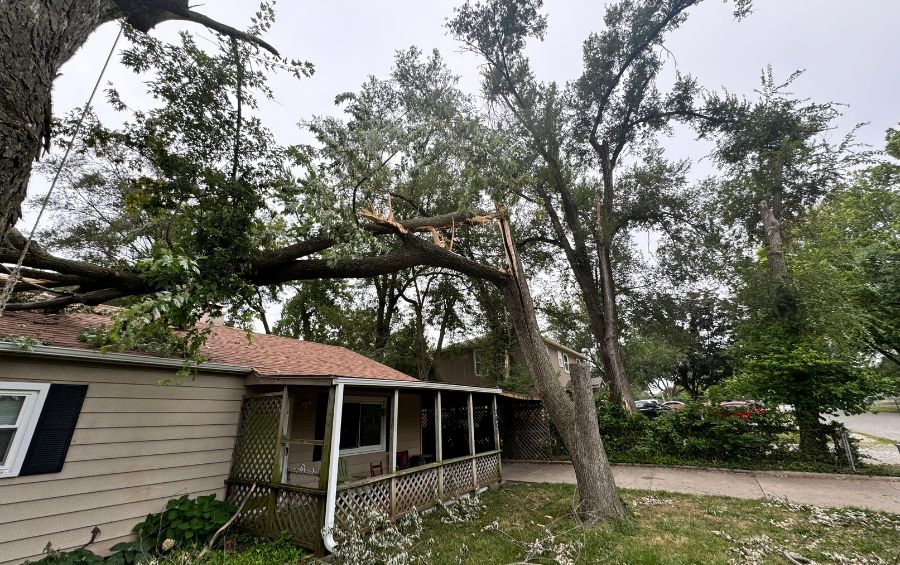
Frequently Asked Questions About Hazardous Trees
Staying informed about hazardous trees and knowing what to do when you see one will help keep you safe. Some of the most common questions our customers ask us about hazardous trees include:
Are all leaning trees dangerous?
No, not all leaning trees are necessarily dangerous. However, if a tree leans more than 10 degrees from vertical, it is at a higher risk of uprooting during a storm. If you notice a leaning tree on your property, you should have an arborist examine it.
Is there anything an arborist can do to save a hazardous tree?
In many cases, arborists can save hazardous trees. They may use methods such as:
- Pruning
- Insect and disease control
- Fertilization
- Cabling and bracing
However, tree removal may be the only option for some hazardous trees.
How often should I have an arborist inspect my trees?
It’s a good idea to have an arborist conduct an assessment yearly. This helps catch any potential problems early and keeps your trees in good shape. You should also consider an inspection before and after big storms. Trees can develop weak spots or hidden damage, and an arborist can help spot those issues before they cause bigger problems.
What Oklahoma species are more prone to becoming hazardous?
The city of Tulsa has prohibited homeowners from planting several types of trees due to their invasive nature or proclivity to becoming hazardous. Some of these species include:
- Silver maple
- Tree-of-heaven
- White ash
- Green ash
- Eastern red cedar
- White poplar
- Bradford pear
We recommend avoiding planting any of these trees.
Arbor Masters Can Remove Your Hazardous Trees and Protect Your Property
A hazardous tree is more than just an eyesore – it’s a serious risk to your property and safety. Don’t put yourself in danger by attempting to remove it on your own. Hazardous tree removal requires specialized equipment, experience, and expertise to ensure the job is done safely and effectively.
At Arbor Masters, we’ve been helping Tulsa homeowners protect their properties with expert tree removal services since 1960. Our team is fully equipped to handle even the most challenging jobs, so you can have peace of mind. Call us today at 918-258-3444 or request a quote online.

Get the latest local news, tree care tips, special offers, and company updates directly to your inbox! It's easy to subscribe and there's no spam - we promise.
"*" indicates required fields

